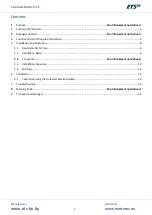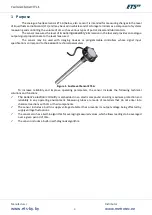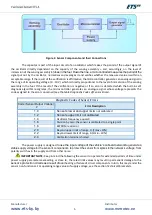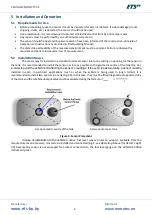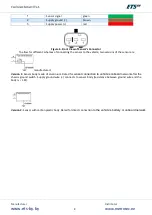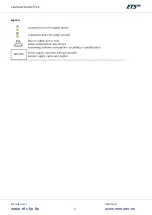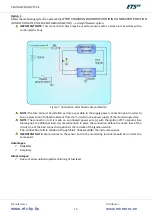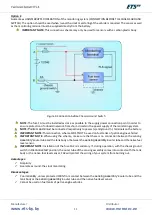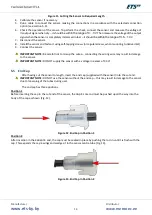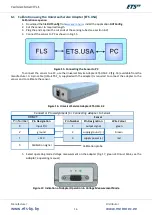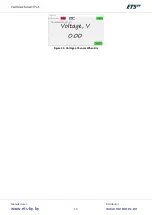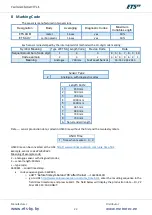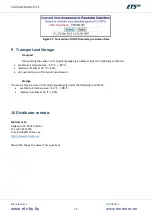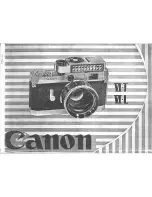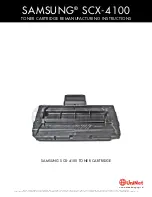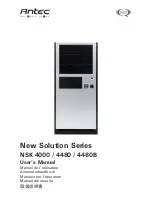
Manufacturer
Distributor
15
Position 3
To remove the cap from the sensor, its core rod must be pushed in further into the cap body. This allows the
wedging wings to retract and makes removal easy (Fig. 14).
Figure 14. End Cap in Position 3
6
Calibration
The purpose of calibration is to obtain a maximum drop in output voltage after cutting the sensing
assembly to required length.
To allow for its length to be cut by 50%, the sensor is supplied with the following parameters:
•
output voltage when dry: 2.98 V.
•
output voltage when completely immersed: 9.8 ± 0.2 V.
•
output signal variability range:
≈
6.82 V.
When the sensor is cut to required length, its output voltage will shift downwards and, at the same time,
the output range will decrease. A sensor that has been cut by 50% will have the following parameters:
•
output voltage when dry: 0 V;
•
output voltage when completely immersed: 3.5 ± 0.2 V;
•
output signal variability range:
≈
3.5 V.
Observe that the drop range of the output signal has been reduced by half (from 6.82 to 3.5 V).
IMPORTANT NOTE:
When the sensor is cut by more than 50%, it will have a dead zone at the low end of
the range, requiring calibration.
The calibration process adjusts the settings of the sensor, maximizing the drop range of the output signal
as follows:
•
output voltage of the sensor when dry: 0 V;
•
output voltage of the sensor when completely immersed: 9.8 ± 0.2 V;
•
output signal variability range:
≈
9.8 V.
IMPORTANT NOTE:
If the sensor is cut to length after calibration, the calibration process must be repeated
–
otherwise there will be a dead zone at the low end of
the sensor’s
range.
IMPORTANT NOTE:
The calibration process may be run also with an uncut sensor in order to extend the
drop range of its output voltage.
IMPORTANT NOTE:
If the sensor has been immersed in fuel, it must be allowed to drain for at least 5
minutes before starting calibration.
Summary of Contents for ETS.A
Page 1: ...Fuel Level Sensor ETS A Operating Manual...
Page 9: ...Manufacturer www ets by by Distributor www metrotec ee 9 Legend...
Page 19: ...Manufacturer www ets by by Distributor www metrotec ee 19 Figure 24 Voltage of Sensor When Dry...
Page 24: ...Manufacturer www ets by by Distributor www metrotec ee 24...


